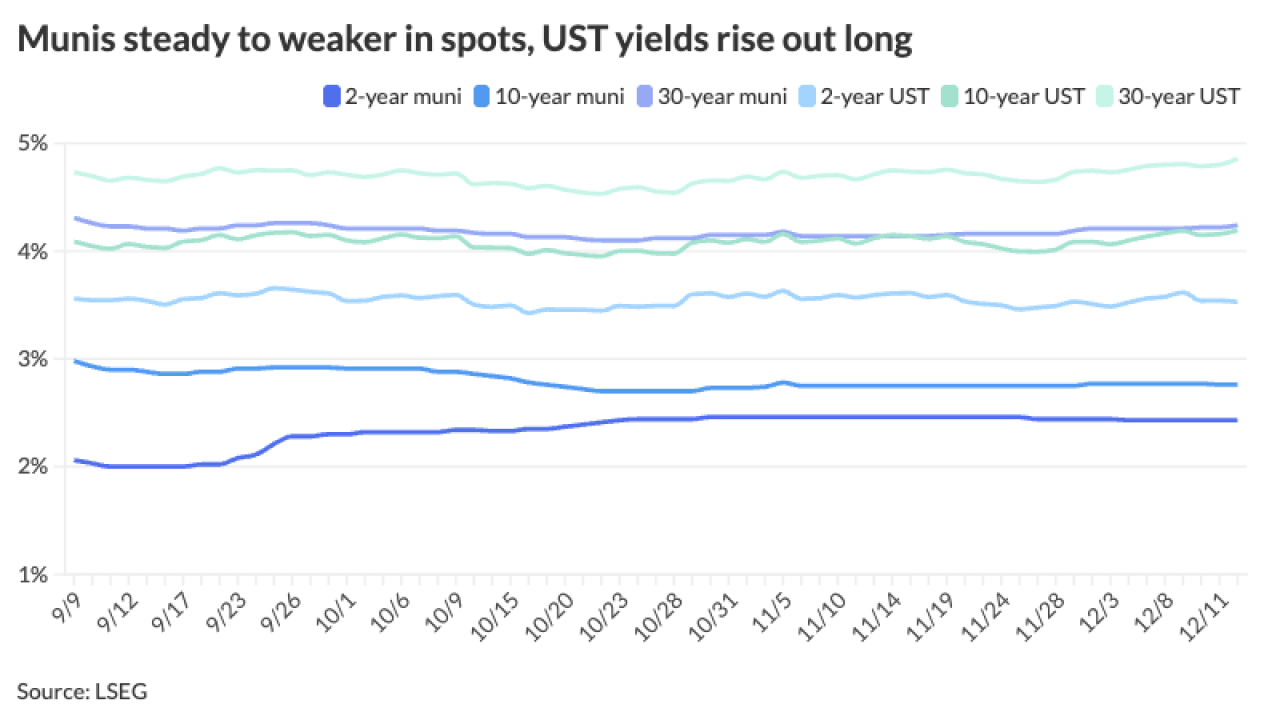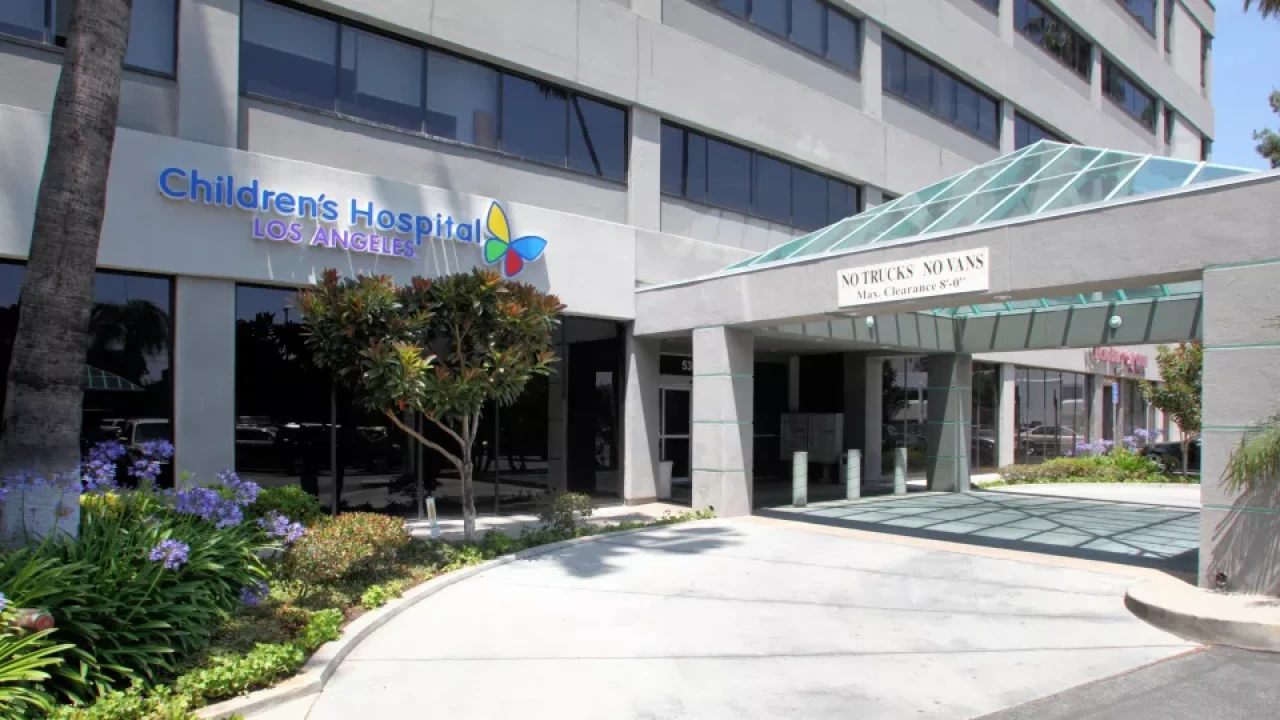
As the nation wrestles with a challenging energy transition exacerbated by the growing power demands of data centers and artificial intelligence, a longtime muni banker has taken on a corner of that puzzle as it relates to Native American tribes.
Debra Saunders, who was among the industry veterans
During the Biden administration, the Inflation Reduction Act dedicated $20 billion to the Department of Energy's Loan Programs Office, but by the time Saunders signed on in July 2024 only one loan had been done to support tribal projects.
The aim was to help shift tribal finance into the public finance space and away from corporate and make the process easier and less expensive for tribal governments, Saunders said.
The Viejas Band of Kumeyaay Indians closed in September on
It was a complicated structure; Saunders and the team she works with are working to simplify it.
"The goal isn't to give them a track record to go outside of LPO, but that would be considered a nice outcome," Saunders said.
The concept is to make it less of a corporate credit, and have tribes analyzed as a governmental body, Saunders said. She said she is working on a deal that will be a test case to determine what can be done to open up public finance as an avenue for tribes.
She analyzed corporate, project and public finance structures to craft a solution, she said.
"In order for people to grasp it, they had to see something in motion," Saunders said. "I took one transaction, we think is a good example, and we are working to get it up and financed."
She can't name names, but said it's a well-known tribe with an established casino in a favorable location that has a good revenue history. The project will be a microgrid similar to the Viejas tribe's.
The tribe Saunders is working with now has borrowed from the private markets before for its casino operation and has a good record of borrowing and repaying debt, she said.
Before Saunders was brought in, tribes had faced the prospect of paying millions for due diligence and then still being rejected by DOE's loan program office, Saunders said.
The issue isn't just one for DOE, however, it's a complication that has long-existed when tribes have attempted to access the municipal bond market.
With Water Infrastructure Finance and Innovation Act and Transportation Infrastructure Finance and Innovation Act loans, the borrower has to contribute a certain percentage of its own money, Saunders said. Traditional WIFIA and TIFIA borrowers can issue bonds or short-term notes to close that gap, but the barriers to entry into public finance for tribes have prevented tribes from issuing bonds to cover the balance, Saunders said.
Since most have not been able to obtain ratings, they can't issue short-term debt, she said. When tribal governments have issued debt, it's usually corporate debt based on corporate ratings, she said.
"They have barriers to entry on the legal side that means most tribal bonds are done as private placements or as limited offerings," she said.
Tribes had been effectively barred from issuing non-taxable government bonds and private activity bonds,
Under the Indian Tribal Government Tax Status Act, which passed in 1982, the U.S. tax code restricted the use of non-taxable tribal government bonds to only "essential government functions." That narrows the set of eligible projects to those typically financed by states through tax revenues, and it prohibits the use of tribal private activity bonds.
The restrictions are onerous on tribes, because they can't levy property taxes on land held in trust, and when land is privately owned, property tax revenues usually flow to state governments, according to the report.
As a result, while state governments issued $47 billion in tax exempt debt from 2014 to 2020, tribal governments only issued $84 million annually, according to data Gregg compiled using The Bond Buyer's 2015-2020 Year in Statistics and SmartAsset.com's inflation calculator.
"It can be done," Saunders said. "You just have to find the right balance of disclosure. We need to get the ratings agencies interested in this sector, because there is a huge need. They need to be more willing to look at them as a government, rather than entities tied to a particular business."
When larger tribes have issued debt, it has been based on balances from casinos, Saunders said. The tribal governments can get ratings based on large cash balances from those businesses, but they are more like corporate bonds.
Tribal revenue sources include casinos, sport centers, hotels and truck stops; and some have private higher education facilities and hospitals. Energy projects, in addition to creating energy sources, can also be a revenue generator for tribes, Saunders said.
Much of the work has been doing analysis, like looking at what Fitch Ratings evaluated in their tribal ratings, she said. She has been analyzing how to structure debt as more project-focused as opposed to corporate.
She also looked at how the DOE Loan Program Office worked with Tesla and PG&E, who have both received loans.
"Tribes have a steady stream of revenue from the state and federal government, and these revenue sources are valid and strong enough to secure debt," Saunders said. "A general obligation bond of a tribe would be similar to the state."
It's just a manner of explaining these aspects in a way and developing analysis that shows the debt would be sustainable, rather than having people view tribes as a multi-headed hydra they don't understand, she said.
The transition from the Biden to the Trump administration set things back by shifting away from focusing on renewable energy sources, but opened them up because it brought in some people that are familiar with public finance, Saunders said.
Increasing demands from technology like artificial intelligence are driving energy demand higher.
The Trump administration has shifted to prioritizing reducing regulations preventing energy projects from getting built. The DOE projects that were in the pipeline prior to the current administration didn't all have a renewable energy bent, though the Biden administration did prioritize funding such projects.
Data centers and transportation electrification are expected to increase demand for U.S. electricity by 2% annually to hit 50% by 2050,
"I think the biggest change is going to come in permit reform," said Kevin McCarthy, the former House speaker, during a Milken Institute Global conference panel this week in Beverly Hills. He said the Federal Energy Regulatory Commission has enough of a backlog that it can easily double the output of approved projects.
Before, nothing could get done if it wasn't renewable, but that is changing, McCarthy said. "Trump will cut regulation faster than Reagan did in the 1980s."
Peter Orszag, chief executive officer and chairman of asset manager Lazard, who also spoke at Milken's conference, referenced his theory on the "myth of energy transmission," in which he argues the transition to renewables is more complex, costly, and time consuming than anticipated.
Orszag
Virginia's Republican governor,. Glenn Youngkin, also a Milken Global speaker, said he has launched an energy plan that focuses on a mix of energy sources, including natural gas, nuclear power, renewables and emerging technologies. His plan is to prime the pump for the country to be a leader in AI.
"We have to unlock power if we want to deliver on AI," said Ruth Porat, Google's president and chief investment officer, at the Milken conference. "China has 30 gigawatts of nuclear power, and the U.S. is not doing anything at that level. As a nation, we have also underinvested in the grid."





